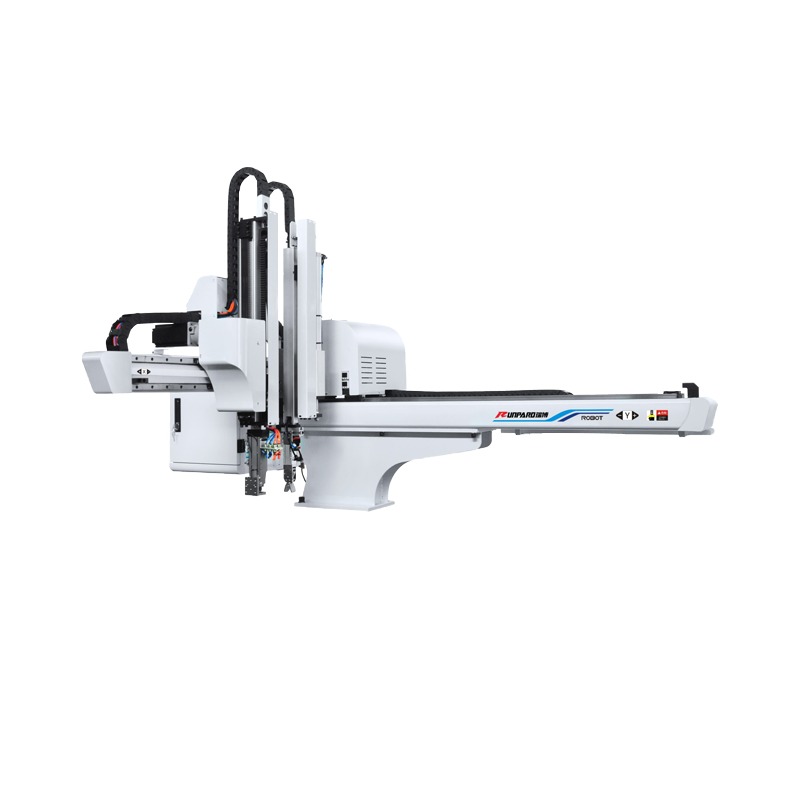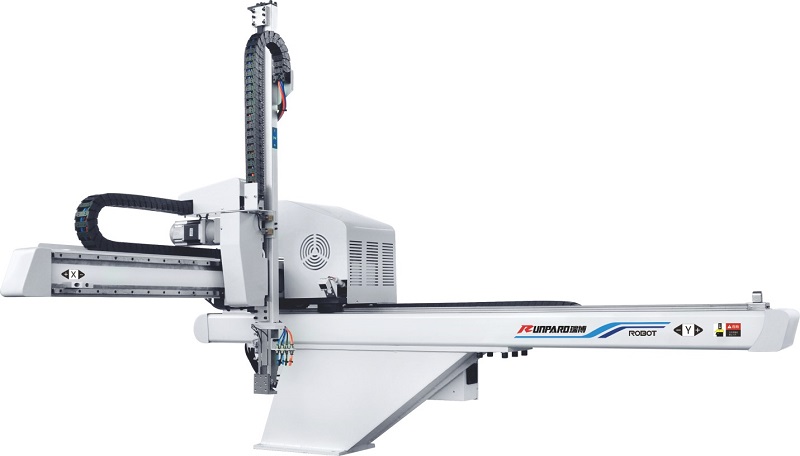Three axis, four axis, and five axis robotic arms belong to a subdivision of the robotic arm industry. So, what are the differences and characteristics of these three types of robotic arms, and in which field are they generally applied? This article will take you to understand
1、 The difference between three axis, four axis, and five axis robotic arms
1. Three axis robotic arm
It refers to a robotic arm with three reliable motion functions, which can also be called a robot; The motion direction of the three axis is generally the XYZ linear motion mode of the truss manipulator. Usually, the three axis manipulator belongs to the customized category, with customizable stroke, load, and motion mode, as shown in the following figure: it has the function of linear movement in three directions; The three-axis robotic arm can complete some applications such as injection molding machine picking up parts, stamping picking up materials, etc. It can stack and stack products, and can be used in a relatively simple way in the front and back processes. Its structure is simple!

2. Four axis robotic arm (robot)
There are four types of four axis robotic arms, including stamping swing arm robotic arms with four axes; Joint four axis robot; Horizontal multi joint robot with four axes; The spider mobile robot has four degrees of freedom in the four axis movement direction, which is distinguished in many industries. For example, stamping automation has joint and swing arm types for stamping specialized robots, and quick sorting spider hands can complete the sorting and handling of small items. It is widely used in industries such as pharmaceuticals and food, as well as the widely used four axis horizontal multi joint robots in the 3C electronics industry, Four axis movement can meet the requirements of handling and stacking in some horizontal positions.
A five axis robotic arm usually subtracts one unnecessary motion axis from a six axis joint, which can meet many applications. Of course, a six axis robot can be used in almost all manufacturing industries, and can meet a wide range of production processing, assembly, welding, spraying, transportation, stacking, polishing, deburring, stamping, etc

2、 Application Fields of Three Axis/Four Axis/Five Axis Manipulators
1. In the field of industrial manufacturing, robots are mainly used to replace humans in completing large-scale, high-quality tasks in the mechanical manufacturing industry, such as automobile manufacturing, ship manufacturing, and the manufacturing of certain household appliances (televisions, refrigerators, washing machines). Spot welding, arc welding, robotic spray painting, cutting, electronic assembly, and transportation and packaging of logistics systems in automated production lines in chemical and other industries are also partially completed by robots.
2. In the military field, robots are mainly used to perform automatic reconnaissance and control tasks, especially relatively dangerous tasks such as unmanned reconnaissance aircraft, bomb removal robots, and mine sweeping robots. Robots can also replace soldiers to complete less complex engineering and logistical tasks, freeing them from heavy work and engaging in more important tasks.
3. Medical field: Robots are mainly used to assist nurses in daily tasks, such as helping doctors transport medication and automatically monitoring the air quality in wards. The robotic arm can also assist doctors in completing some difficult surgeries, such as eye surgery, brain surgery, etc. The United States has also invented a micro robotic hand that can enter human blood vessels, helping doctors kill viruses in patients' blood vessels.
4. Entertainment field: Robots are widely used in the entertainment field. Robots are a new type of device developed in mechanized and automated production processes. In modern production processes, robotic arms are widely used in automatic production lines. The development and production of robotic arms have become an emerging technology rapidly developing in high-tech neighborhoods. It has further promoted the development of robotic arms, enabling them to better achieve organic integration with mechanization and automation. Plastic machinery in China has become one of the fastest growing industries in the mechanical manufacturing industry, with an increasing annual demand.
Summary: The differences and working methods of three axis, four axis, and five axis robotic arms (robots) can be summarized here. If there is a production need to improve automation, a better way is to directly consult the injection molding robotic arm manufacturer! Ruibo Automation is a professional research and development, production, and sales of injection molding robots. It can provide a reasonable and professional evaluation of automation transformation based on actual production conditions and action requirements! Thank you for reading








 Ruibo Automation
Ruibo Automation



